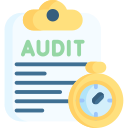
Developing a Technology Audit Plan for Risk Management
Chosen theme: Developing a Technology Audit Plan for Risk Management. Step into a practical, encouraging guide that transforms uncertainty into a clear, actionable roadmap. Subscribe and join peers who turn risk into resilience—one smart audit step at a time.


Setting the Stage: Why This Plan Protects What Matters
A payments company once discovered a fragile API gateway during planning, not post-incident. The audit plan flagged weak change controls, prioritized testing, and avoided a costly outage during peak season. Planning saved revenue and reputation.
Setting the Stage: Why This Plan Protects What Matters
Success means fewer surprises, faster response, and measurable risk reduction. Your plan should translate threats into prioritized audits, targeted tests, and timely reporting that leadership actually uses to steer investments and strengthen accountability across teams.

This is the heading
Lorem ipsum dolor sit amet, consectetur adipiscing elit. Ut elit tellus, luctus nec ullamcorper mattis, pulvinar dapibus leo.

This is the heading
Lorem ipsum dolor sit amet, consectetur adipiscing elit. Ut elit tellus, luctus nec ullamcorper mattis, pulvinar dapibus leo.
Blend COBIT for governance, NIST CSF for cybersecurity outcomes, ISO 27001 for structured control sets, and COSO for enterprise risk. Map controls across frameworks to avoid duplication and ensure a coherent narrative for leadership.


Building a clear, consistent risk model
Define inherent and residual risk, impact dimensions, and likelihood scales with examples. Use scenario-based questions to reduce subjectivity. Calibrate scores across teams so a “high” in engineering equals a “high” in compliance.

Feeding the model with meaningful data and KRIs
Pull from vulnerability backlogs, incident tickets, change failure rates, third-party findings, DR test results, and asset inventories. KRIs like privileged access growth or unpatched critical CVEs can trigger midyear plan adjustments before incidents erupt.

Making prioritization visible and persuasive
Translate scores into a ranked audit backlog and heatmaps tied to business services. Present trade-offs transparently so leaders see why some audits wait and others start now. Ask readers which visualization earns quickest buy-in.
Execution Roadmap: Timeline, Team, and Fieldwork
Annual cadence, milestones, and agility
Lay out planning, kickoff, fieldwork, reporting, and follow-up. Reserve capacity for emergent risks and post-incident reviews. Revisit the plan quarterly so changing architectures and threats are reflected before surprises become headlines.
Skills matrix and sourcing the right expertise
Map needed skills—cloud security, identity, data protection, DevOps pipelines, and vendor risk—to your team. Blend internal talent with co-sourced specialists. Pair auditors and engineers to accelerate learning and reduce friction during walkthroughs.
Fieldwork playbook and respectful collaboration
Use concise request lists, shared evidence folders, and office hours to reduce churn. Confirm configurations live, not just via screenshots. Celebrate partner wins in reports to maintain trust and encourage timely remediation commitments.
Third-Party, Cloud, and Emerging Tech Risks in the Plan
Incorporate due diligence, contract clauses, and monitoring. Review SOC reports, pen test summaries, and breach notification obligations. Sample integrations handling sensitive data and validate offboarding processes for terminated vendors and expired access tokens.
